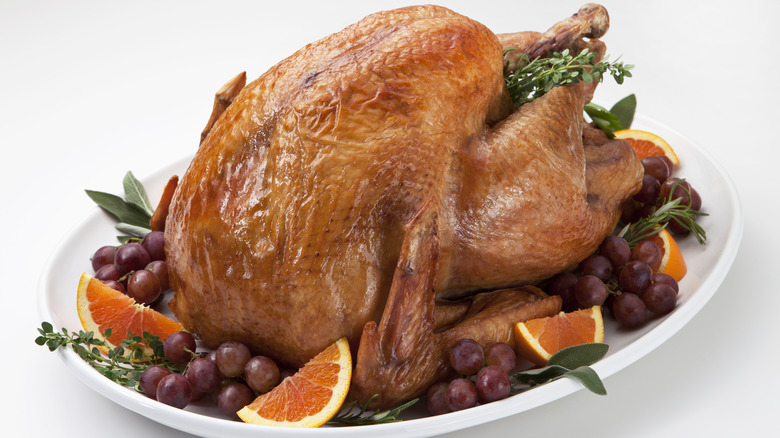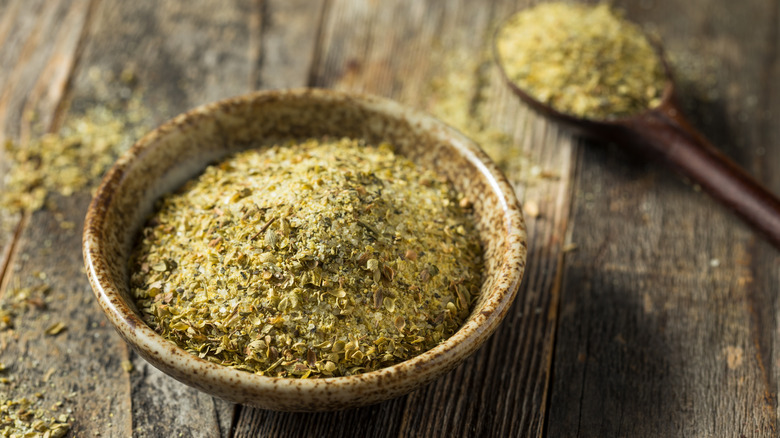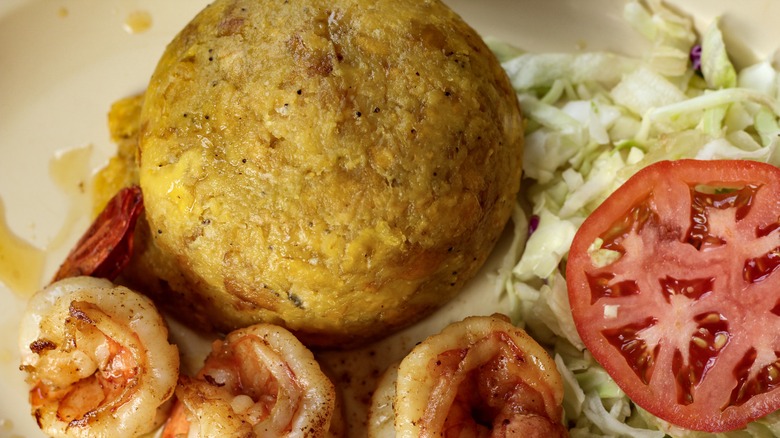Pavochon Is The Puerto Rican Turkey Dish That's A Staple Of Thanksgiving
Puerto Rico might still be waiting on statehood, but that doesn't stop Thanksgiving dinner from being served just the same. Rather, Boricuas have put their own spin on the holiday meal by combining traditional mainland fare with their island specialties. Yucca, plantains, and roasted pig are common dishes, along with rice and beans or rice and pigeon peas. But the star of Puerto Rican Thanksgiving is undoubtedly pavochón. The customary main course is a turkey that's prepared much in the same way as a roasted young pig — hence, its name is a combination of turkey (pavo) and suckling pig (lechón).
The specific ingredients in pavochón may vary from family to family and recipe to recipe, but ultimately, it is a well-seasoned bird that is more reminiscent of pork than the standard U.S.-style turkey. Additionally, it is often stuffed with mofongo — which is made from plantains and chicharrones — instead of the usual dressing.
The secret to pavochón is in the marinade
When it comes to Thanksgiving Day turkeys, brines may be more popular than marinades, but pavochón gets its flavor from the latter. However, this marinade is a little different from what you're probably used to. Instead of soaking the turkey in a generous bath of liquid, the wet adobo used for pavochón is rubbed directly into the bird's flesh and its internal cavity. Considering that you have to slide the marinade under the skin in order to work it into the turkey, this method is definitely more work than a simple brine — but it's so worth it!
So what is wet adobo anyway? It's a delicious seasoning made from a generous helping of fresh garlic, salt, black peppercorns, and oregano that have been ground by hand using a pilón (or mortar and pestle). White wine vinegar and olive oil are then added to finish it off. While adobo seasoning can be purchased pre-made, an authentic pavochón calls for fresh homemade marinade.
Why is pavochón stuffed with mofongo?
Not only is mofongo dear to the people of Puerto Rico, but it also exemplifies its multiculturalism — making it a fitting stuffing for the Thanksgiving staple. The mashed green plantains that are used to make mofongo are reminiscent of West African fufu, while the pilón was a tool of the Taino, who were the island's original inhabitants. The colonial influence is evident in mofongo's sauce, which is similar to the Spanish sofrito. That the pilón is also used to make the wet adobo for the pavochón is also fitting and further demonstrates how the traditional Puerto Rican Thanksgiving turkey is an amalgamation of all the cultures involved.
In addition to the cultural symbolism, the chicharrón (also known as pork rind or fried pork skin) in mofongo recipes helps give the pavochón some of its roasted pork-like flavor. Overall, pavochón is uniquely Puerto Rican, setting it apart as a Thanksgiving Day tradition fitting to the island and its distinctive history.


